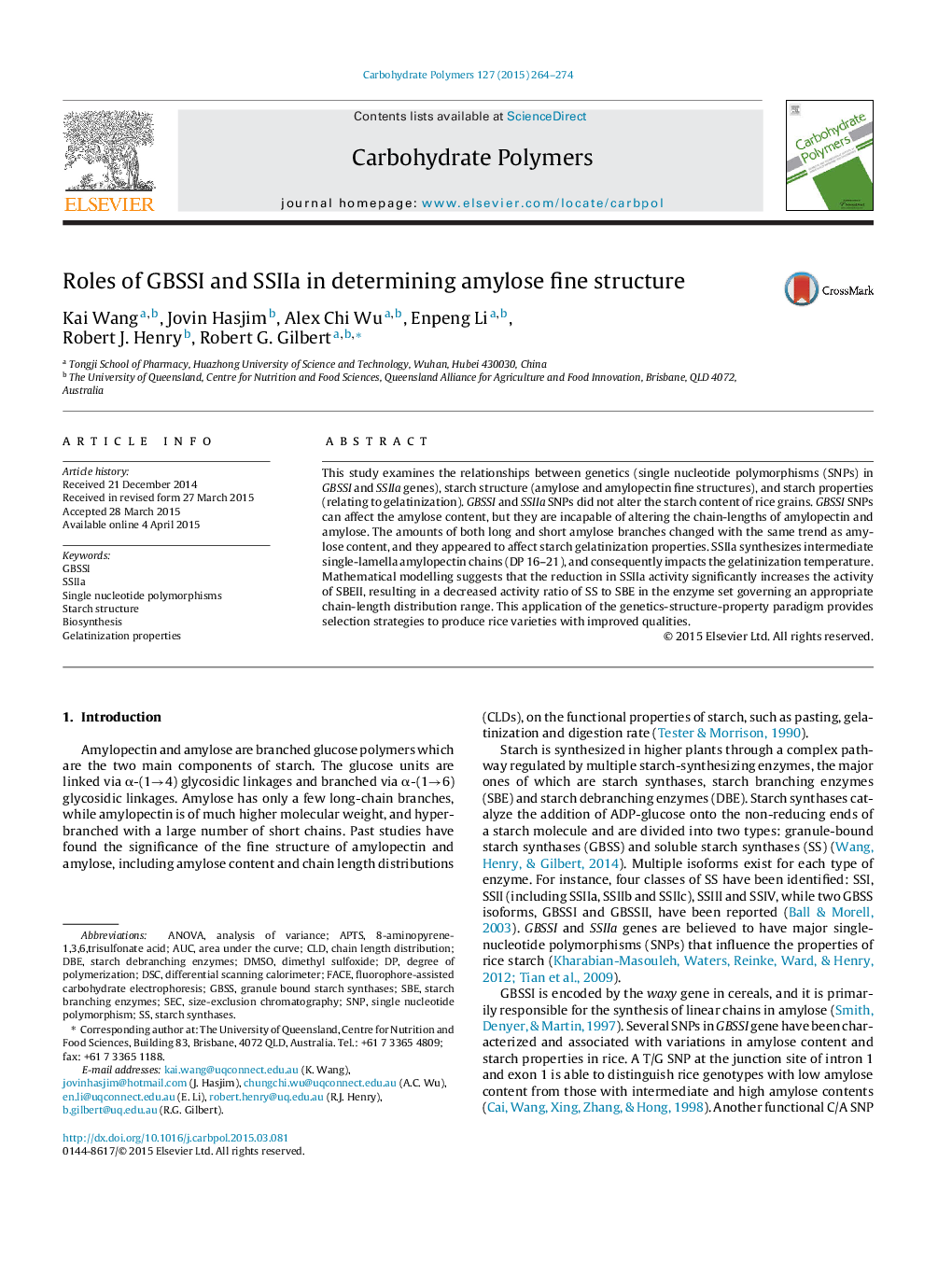| Article ID | Journal | Published Year | Pages | File Type |
|---|---|---|---|---|
| 7788504 | Carbohydrate Polymers | 2015 | 11 Pages |
Abstract
This study examines the relationships between genetics (single nucleotide polymorphisms (SNPs) in GBSSI and SSIIa genes), starch structure (amylose and amylopectin fine structures), and starch properties (relating to gelatinization). GBSSI and SSIIa SNPs did not alter the starch content of rice grains. GBSSI SNPs can affect the amylose content, but they are incapable of altering the chain-lengths of amylopectin and amylose. The amounts of both long and short amylose branches changed with the same trend as amylose content, and they appeared to affect starch gelatinization properties. SSIIa synthesizes intermediate single-lamella amylopectin chains (DP 16-21), and consequently impacts the gelatinization temperature. Mathematical modelling suggests that the reduction in SSIIa activity significantly increases the activity of SBEII, resulting in a decreased activity ratio of SS to SBE in the enzyme set governing an appropriate chain-length distribution range. This application of the genetics-structure-property paradigm provides selection strategies to produce rice varieties with improved qualities.
Keywords
Gelatinization propertiesDSCGBSSIAPTSSBESECCLDDBEGBSSAUCDMSOfluorophore-assisted carbohydrate electrophoresisSize-exclusion chromatographyBiosynthesisanalysis of varianceANOVAChain length distributiondegree of polymerizationDimethyl sulfoxideStarch structureFacearea under the curveSingle nucleotide polymorphismsSingle nucleotide polymorphismSNPdifferential scanning calorimeter
Related Topics
Physical Sciences and Engineering
Chemistry
Organic Chemistry
Authors
Kai Wang, Jovin Hasjim, Alex Chi Wu, Enpeng Li, Robert J. Henry, Robert G. Gilbert,
